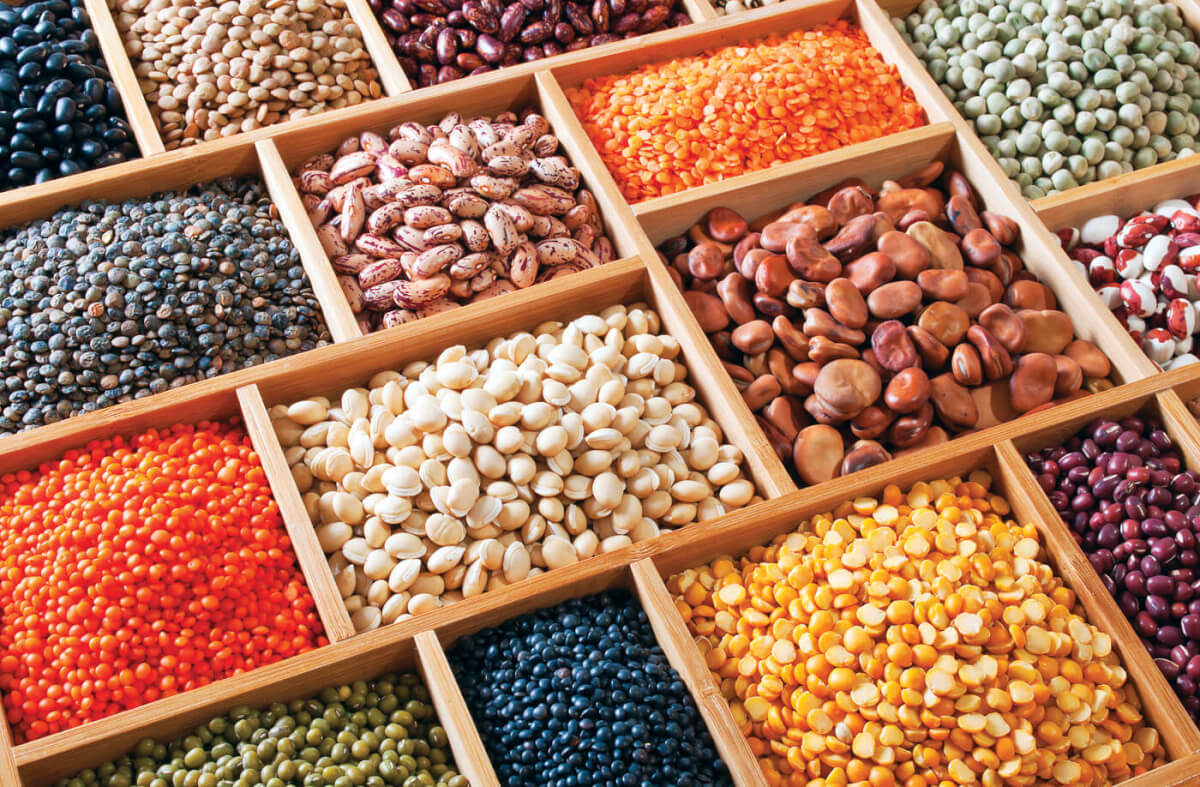When the hunt and catch are both scarce, beans arise as the next best source of protein. However, are beans actually second-best?
With the health benefits and a cheap price, are beans emerging as a champion in the competition of protein?
Read along to learn the five fundamentals of beans and get them into your diet sooner than later!
1. FROM AMINO ACID TO PROTEIN
Proteins are known as the building blocks for muscle and strength. While meats, grains and nuts almost always provide such protein, beans also are a great source.
Maria Kennedy, a licensed and registered dietitian with a food science degree from North Carolina State University and a master’s degree in public health and nutrition from the University of North Carolina, explained the process of protein: “All proteins are made from amino acids, nine of which are essential amino acids. An essential amino acid is one the body must have … but cannot make. Beans contain most, but not all, of the essential amino acids. As luck would have it, grain products, such as rice or wheat, contain the essential amino acids that beans are missing. Eating grains and beans will provide the body with all the protein it would need when animal products are not available for consumption.
Interestingly, quinoa is a grain that is a complete protein [it contains all the essential amino acids].”
“Do not add any Sodium Bicarbonate to the water when soaking beans because it can break down Thiamin, or Vitamin B-1.”
—Maria Kennedy, licensed and registered Dietitian
2. BEAN BATHING
According to Kennedy, beans can be soaked two ways, the first being in water for six to eight hours in order to rehydrate them before cooking. The second is known as a ‘quick soak.’ “This is done by bringing the dried beans and water to a boil for two minutes, removing the beans from the heat and allowing them to soak for an hour or two,” Kennedy says. “While this method is slightly more labor intensive, it is believed to help reduce more of the oligosaccharide content of the beans. This may result in a cooked bean that is less likely to cause flatulence.” Kennedy further notes that regardless of method, draining and rinsing the beans after soaking is crucial for a successful recipe.
3. RETAIN THAT FLAVOR
With flavor being a convincing factor in the consumption of beans, retaining the flavor becomes an imperative part of the process. According to Kennedy, adding onions, herbs or seasoning such as thyme or dried pepper, would substantially add to the taste; however, adding salt or acidic foods like vinegar should wait until after cooking is complete in order to ensure that the beans remain tender for eating rather than turning tough.
4. NUTRIENTS OF THE BEAN
According to the U.S. Dry Bean Council, beans provide several minerals and portions of their recommended daily values. By providing nutrients like calcium, carbohydrates, copper, fiber, folate, iron, magnesium, manganese, potassium, protein, selenium and zinc, beans can help the improvement of the overall health of a person. In order to retain these nutrients, in addition to several others, while preparing beans, Kennedy says, “Do not add any sodium bicarbonate to the water when soaking beans because it can break down thiamin, or vitamin B-1.”
5. HEALTH BENEFITS
With so many essential supplements included, beans are great in ensuring good future health. According to the U.S. Dry Bean Council, beans, by having the necessary nutrients, are able to help build and repair bones, maintain energy, fight cell-damaging combatants, relieve constipation, help various stages of childbearing, regulate blood sugar, keep the heart rhythm steady, metabolize fats and carbohydrates, control high blood pressure, allow for adequate growth, regulate thyroid functions and strengthen the immune system.

“Eating grains and beans will provide the body with all the protein it would need when animal products are not available…” – Maria Kennedy, licensed and registered Dietitian
Ingredients:
1 small onion, finely chopped
1 large or 2 small stalks of celery, finely chopped
1 large or 2 small carrots, finely chopped
4 cloves of garlic, minced
1 tablespoon of olive or grapeseed oil
1 pound package of lentils, sorted and rinsed
6 cups of water
2 bay leaves
½ teaspoon black pepper
Salt
Parmesan cheese (optional)
Directions:
- Heat oil in medium or large pot and sauté onion until translucent.
- Add celery, carrots and ½ teaspoon black pepper. Sauté for a couple of minutes, add garlic and sauté for a minute or two longer.
- Add lentils, bay leaves and water. Heat until boiling, then simmer for 45 minutes to an hour.
- Add a dash of salt and more pepper to taste.
Serve these with Parmesan cheese if desired.
Source: A Diva’s Guide to Nutrition and Wellness
According to the U.S. Dry Bean Council, there are several bean varieties for consumption, including:
– Adzuki
– Baby Lima
– Black
– Black-eyed
– Cranberry
– Dark Red Kidney
– Garbanzo
– Great Northern
– Large Lima
– Light Red Kidney
– Navy
– Pink
– Pinto
– Yellow eye
Editor’s note: A version of this article first appeared in the April 2014 print issue of American Survival Guide.


